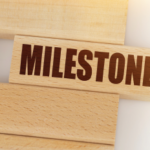BOSTON—Pore over the thousands of articles published in medical education journals in just one year, and you begin to spot common threads. What we read most often on the page or screen helps us track trends in physician training and education models worldwide, said speakers at the ACR/ARHP Annual Meeting in Boston.
In his Nov. 16, 2014, lecture, Medical Education: The Year in Review, Andrew R. Hoellein, MD, MS, FACP, presented findings from the hottest topics in physician training based on a PubMed scan of thousands of articles and related citations. Dr. Hoellein, an associate professor of medicine at the University of Kentucky College of Medicine in Lexington, identified the most popular medical education subjects in 2014. These included longitudinal integrated clerkships, patient safety training, teaching hospitals, clinical competency and learning culture. He presented intriguing and even amusing observations about factors that influence the success of various education models.
Patient-Centeredness
The longitudinal integrated clerkship (LIC) model of medical education focuses on trainees developing close and continuous contact with cohorts of patients, said Dr. Hoellein. “In this model, students feel a sense of duty to patients and practice more patient advocacy due to this contact,” he said.
LICs have both skeptics and supporters, said Dr. Hoellein. Skeptics point to no long-term outcomes to support the extra cost associated with these programs, and supporters say LICs create “strong bonds with mentors and patients” that rotation-based clerkships may not offer, he said.
One study published in the journal, Academic Medicine, in 2014 compared academic performance between students in both types of programs at the University of Calgary in Alberta, Canada.1 The Calgary researchers found that there was no difference in evaluation scores measuring medical knowledge, clinical performance, or clinical skills, he said. In a follow-up on the original cohort of the Cambridge model, survey results showed that LIC-trained students scored higher on the Patient-Practitioner Orientation Scale (PPOS), measuring clinical acumen and human sensitivity, than traditionally trained students at Harvard Medical School.
‘We need to recognize what’s been happening in the past, but we need to stop wasting time & dollars on unimportant research questions or on those already answered.’
“Patient-centeredness endures in LIC graduates,” said Dr. Hoellein. “Over time, the PPOS score differences remained. LIC graduates felt better prepared to understand the role of patients and their families in care, and better prepared to be the patient’s advocate.”



